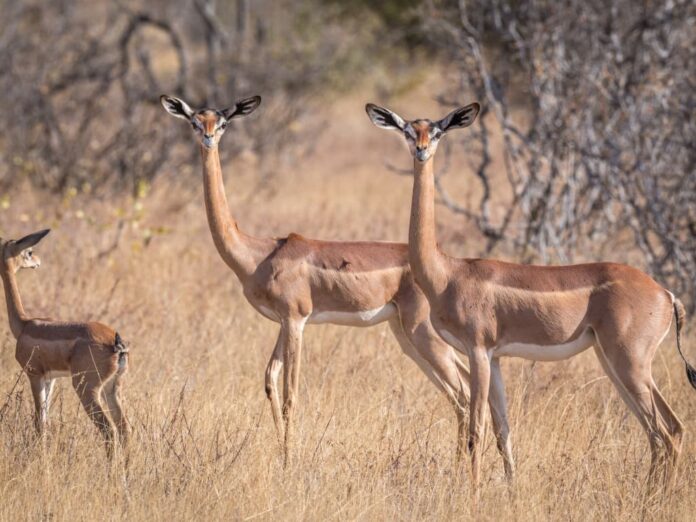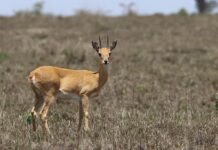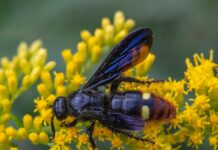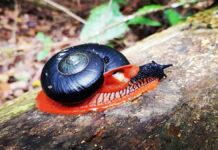When it comes to animals with long necks, giraffes are the ones that always come first. Gerenuk is the longest-necked species of the gazelle family; hence the other nickname Giraffe Gazelle. You cannot mistake it for another animal ever, and this is one of the special facts about gerenuks. Not everyone knows about gerenuks, and this is why I want to talk about them today. There are many fascinating things about gerenuk to learn about, so let’s take a look at them below.
1Appearance
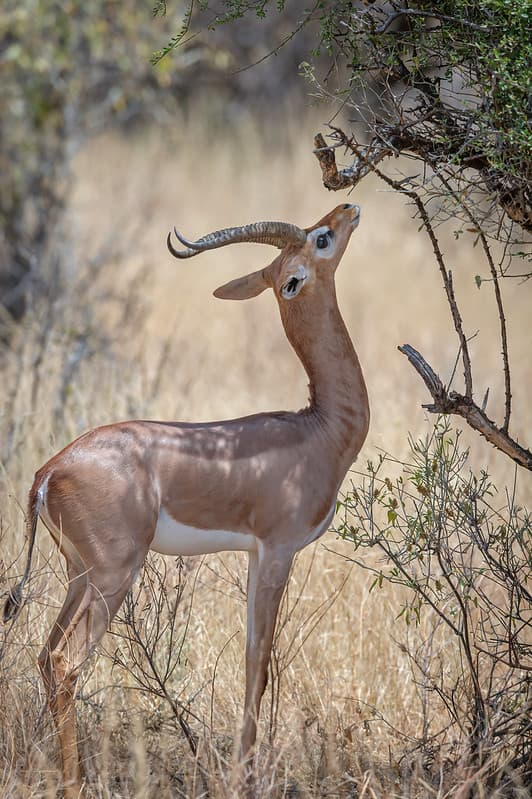
When it comes to animals that look like a combination of two other animals, gerenuks are one of those. A gerenuk appears like a small springbok with a giraffe neck, and that is ridiculously adorable to look at. As you can see, it has a small head but big eyes and ears that point straight up. The interesting part is that gerenuks have preorbital glands in front of their large eyes. The glands emit a tar-like substance that these animals use to mark their territories. Gerenuks always look curious, and sometimes they have this silly facial expression when they stick their tongues out. Females are smaller than males, and they have a dark patch on their hornless crowns. On the other hand, the males have S-shaped horns that curve backward which measure between 25 to 44 centimeters.
A gerenuk is between 80 to 100 centimeters tall, and it has an extremely long neck. That long neck helps it to reach more food from the trees without having to graze on the ground. Along with the long necks, gerenuks also have long slender legs that help them with feeding and running. Those legs also allow them to reach different plant species that most antelopes cannot. When standing up to feed, a gerenuk can reach plants up to 2 meters high. The special part is that there are scent glands on their knees and in the split of their hooves. These scent glands work just like the ones near their eyes with the same purpose to mark territories. Gerenuks have light brown or tawny fur with a white underbelly, and they have a black tuft on the tail.
2Behavior
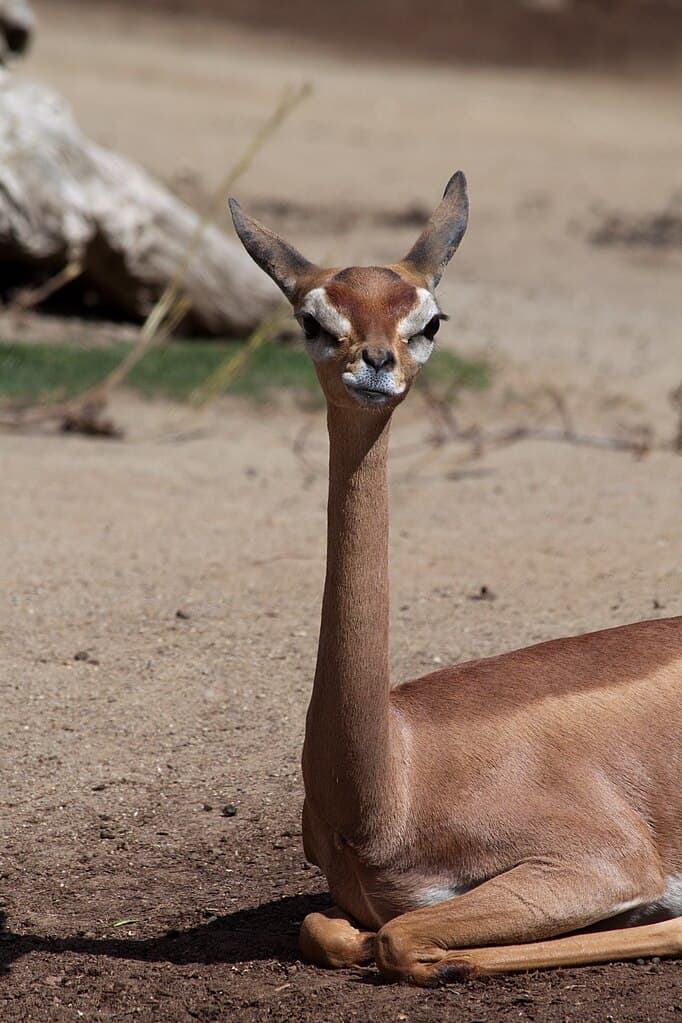
Adult male gerenuks are solitary, so they typically live and venture alone except during the breeding season. Sometimes young males also form their bachelor herds where they roam together until they find their own territories. The males use their scent to mark territories, and everyone respects each other’s mark. As for the females, they will create a band of around 10 members who are related to one another. By living in a herd, the females are able to alert and protect each other from some potential predators. These diurnal animals are shy and timid, so they rather avoid detection by standing still when disturbed. A gerenuk uses vocalizations like buzzing, loud bleats, and whistles to communicate with each other. The buzzing is to alarm the others, the bleat is to signal extreme danger, and they whistle when they are annoyed.
One of the beautiful characteristics of these mammals is that they are extremely caring mothers. A gerenuk mom goes through 7 months of gestation before leaving the herd to give birth in an isolated spot. After the delivery, both the mom and the fawn will remain in that spot for a few weeks. A mother gerenuk cleans her young immediately after birth, and feeds the baby a few times a day. At the same time, she is so thoughtful she eats any leftover food to remove traces that might attract potential predators. The best part is the mother speaks to her fawn in a very gentle tone and soft bleating noises. This is to calm and keep the baby comfortable, their mother’s sense of caring is absolutely admirable. When the calf is big enough, it will back to the herd with its mom.
3Feeding & Habitats
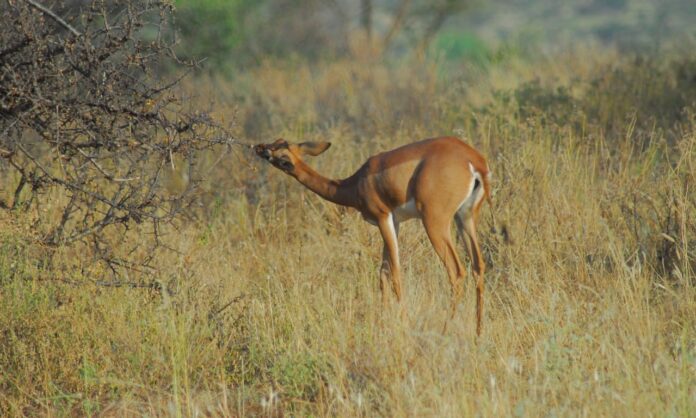
While other antelopes graze on the ground, gerenuks use a different approach to feed. They often stand on their two hind legs and put their two front legs on the tree trunks for balance. With the help of their long necks, these herbivores simply feed on fresh and tasty leaves from tree branches. Their most common food is acacias and other thorny plants, but they also consume buds, flowers, and fruits. Just like giraffes, the fascinating thing about them is that they never have to drink water. The plants that gerenuks feed on contain enough water so they don’t need to drink water at all. Plus with the fact that they eat over 80 different types of leaves, the menu is big. These are the bonus that allows these mini giraffes to survive in desert areas and hot weather conditions.
Gerenuks are native to Africa, and they are common in Eretria, Ethiopia, Kenya, Southern Somalia, and Tanzania. Lately, their populations are also found in Egypt and Northern Sudan as well. As desert animals, gerenuks live in open habitats like dry deserts, lowland arid thorn brush, savannas, scrublands, treeless plains, and woody vegetation. Their populations are more in the drier regions of East Africa and in the Horn of Africa.
4Predators & Threats
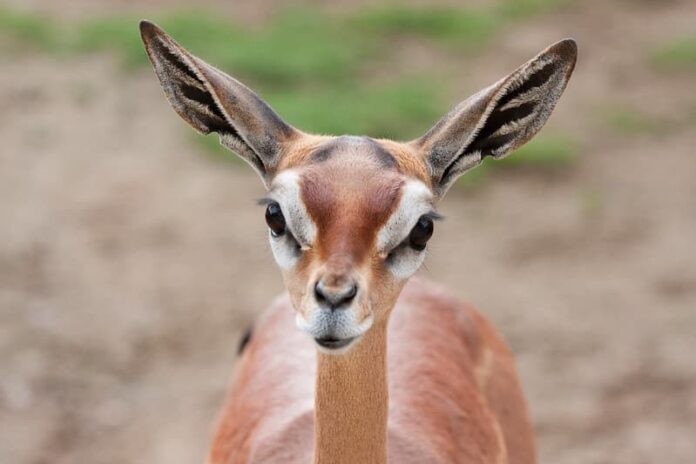
The most common predators of gerenuks are caracal, cheetahs, honey badgers, hyenas, hunting dogs, leopards, lions, serval, and wild dogs. On some occasions, large eagles will also attack and prey on weak baby gerenuks that cannot protect themselves. Even adults cannot protect themselves most of the time due to their poor defense instinct. When there are predators nearby, a gerenuk often tries to “trot” instead of running or sprinting from danger. Sometimes they even freeze, making themselves easy meals for the big cats and dogs in the savanna.
Gerenuks are considered Near Threatened in the IUCN list due to fragmentation and habitat loss caused by people. The development of settlements leads to land clearing for agriculture, road, and more which affects their natural habitat greatly. As a result, those who are forced to leave cannot find suitable food and shelter. Additionally, they cannot also find mates while facing a high risk of falling prey to predators. There are approximately 95,000 individuals remaining across 4 countries in Africa, and the number is decreasing as we speak.
Related Post: World’s Largest/Tallest Deer

